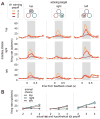The prefrontal cortex and hybrid learning during iterative competitive games
- PMID: 22145879
- PMCID: PMC3302724
- DOI: 10.1111/j.1749-6632.2011.06223.x
The prefrontal cortex and hybrid learning during iterative competitive games
Abstract
Behavioral changes driven by reinforcement and punishment are referred to as simple or model-free reinforcement learning. Animals can also change their behaviors by observing events that are neither appetitive nor aversive when these events provide new information about payoffs available from alternative actions. This is an example of model-based reinforcement learning and can be accomplished by incorporating hypothetical reward signals into the value functions for specific actions. Recent neuroimaging and single-neuron recording studies showed that the prefrontal cortex and the striatum are involved not only in reinforcement and punishment, but also in model-based reinforcement learning. We found evidence for both types of learning, and hence hybrid learning, in monkeys during simulated competitive games. In addition, in both the dorsolateral prefrontal cortex and orbitofrontal cortex, individual neurons heterogeneously encoded signals related to actual and hypothetical outcomes from specific actions, suggesting that both areas might contribute to hybrid learning.
© 2011 New York Academy of Sciences.
Conflict of interest statement
The authors declare no conflicts of interest.
Figures




Similar articles
-
Representations of appetitive and aversive information in the primate orbitofrontal cortex.Ann N Y Acad Sci. 2011 Dec;1239:59-70. doi: 10.1111/j.1749-6632.2011.06255.x. Ann N Y Acad Sci. 2011. PMID: 22145876 Free PMC article.
-
Valuation of uncertain and delayed rewards in primate prefrontal cortex.Neural Netw. 2009 Apr;22(3):294-304. doi: 10.1016/j.neunet.2009.03.010. Epub 2009 Mar 29. Neural Netw. 2009. PMID: 19375276 Free PMC article. Review.
-
Neural correlates of strategic reasoning during competitive games.Science. 2014 Oct 17;346(6207):340-3. doi: 10.1126/science.1256254. Epub 2014 Sep 18. Science. 2014. PMID: 25236468 Free PMC article.
-
Mechanisms of reinforcement learning and decision making in the primate dorsolateral prefrontal cortex.Ann N Y Acad Sci. 2007 May;1104:108-22. doi: 10.1196/annals.1390.007. Epub 2007 Mar 8. Ann N Y Acad Sci. 2007. PMID: 17347332 Review.
-
Prefrontal cortex and decision making in a mixed-strategy game.Nat Neurosci. 2004 Apr;7(4):404-10. doi: 10.1038/nn1209. Epub 2004 Mar 7. Nat Neurosci. 2004. PMID: 15004564
Cited by
-
Prefrontal Cortex Predicts State Switches during Reversal Learning.Neuron. 2020 Jun 17;106(6):1044-1054.e4. doi: 10.1016/j.neuron.2020.03.024. Epub 2020 Apr 20. Neuron. 2020. PMID: 32315603 Free PMC article.
-
Insights from the application of computational neuroimaging to social neuroscience.Curr Opin Neurobiol. 2013 Jun;23(3):387-92. doi: 10.1016/j.conb.2013.02.007. Epub 2013 Mar 18. Curr Opin Neurobiol. 2013. PMID: 23518140 Free PMC article. Review.
-
The orbitofrontal oracle: cortical mechanisms for the prediction and evaluation of specific behavioral outcomes.Neuron. 2014 Dec 17;84(6):1143-56. doi: 10.1016/j.neuron.2014.10.049. Neuron. 2014. PMID: 25521376 Free PMC article. Review.
-
Inference as a fundamental process in behavior.Curr Opin Behav Sci. 2021 Apr;38:8-13. doi: 10.1016/j.cobeha.2020.06.005. Epub 2020 Jul 22. Curr Opin Behav Sci. 2021. PMID: 35492434 Free PMC article.
-
Habits without values.Psychol Rev. 2019 Mar;126(2):292-311. doi: 10.1037/rev0000120. Epub 2019 Jan 24. Psychol Rev. 2019. PMID: 30676040 Free PMC article.
References
-
- Sutton RS, Barto AG. Reinforcement learning: an introduction. MIT Press; Massachusetts: 1998.
-
- Tolman EC. Cognitive maps in rats and men. Psychol Rev. 1948;55:189–208. - PubMed
-
- Balleine BW, Dickinson A. Goal-directed instrumental action: contingency and incentive learning and their cortical substrates. Neuropharmacology. 1998;37:407–419. - PubMed
Publication types
MeSH terms
Grants and funding
LinkOut - more resources
Full Text Sources

